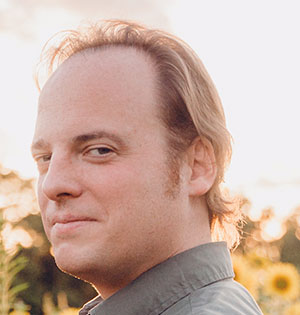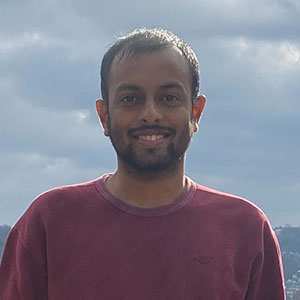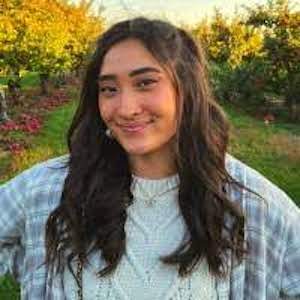Group Members
PI
Paul Duffell
Prof. Duffell's field of research is broadly in numerical gas dynamics and magnetohydrodynamics (MHD). He has developed several unique and powerful numerical codes for solving the MHD equations using a novel "moving mesh" technique. These methods are advantageous for evolving highly supersonic and relativistic flows, which are quite common in astrophysics.
Our group's general process is to develop and write new numerical methods for evolving astrophysical flows, and to apply these codes to a wide variety of problems in astrophysics. Prof. Duffell has experience in planet-disk and binary-disk interactions, supernovae, gamma-ray bursts, hydrodynamic instabilities and turbulence, binary black hole and neutron star mergers, and active galactic nuclei. Because our group specializes in hydrodynamics rather than a particular astrophysical phenomenon, we have the luxury of working on a wide variety of topics.

Graduate Students
Soham Mandal
Soham Mandal has experience in active galactic nuclei, both from an observational and theoretical perspective. He has developed a method for measuring how relativistic an AGN jet is propagating, and relating it to the observed morphology of the jet. His model proposes a criterion for whether a jet will be observed as a FRI or FRII object. Additionally, he has shown that the number and spacing of recollimation shocks in a jet can be related to the velocity of the jet head.
Presently, Soham is studying Rayleigh-Taylor instability in supernovae, to determine whether the morphology of a supernova remnant contains structural information telling us how much asymmetry the initial explosion started with.
Soham has developed his own unique code, SPROUT, for computing the evolution of expanding 3D flows over large dynamic ranges. Code paper is being written presently.
Publications by Soham:
Sculpting the Morphology of Supernova Remnant Pa 30 via Efficient Ejecta Cooling
Duffell, Paul C., Polin, Abigail, & Mandal, Soham (ApJL Submitted) 2024
Measurement of anisotropies in Supernova Remnant observations and their interpretation using numerical models Mandal, Soham, Duffell, Paul C., Polin, Abigail, & Milisavljevic, Dan (ApJ Submitted) 2024
SPROUT: A Moving-mesh Hydro Code Using a Uniformly Expanding Cartesian Grid
Mandal, Soham & Duffell, Paul C. ApJS, 2023
A 3D Numerical Study of Anisotropies in Supernova Remnants
Mandal, Soham, Duffell, Paul C., Polin, Abigail, & Milisavljevic, Dan ApJ, 2023
Numerical Investigation of Dynamical and Morphological Trends in Relativistic Jets
Mandal, Soham, Duffell, Paul C., & Li, Yuan ApJ, 2022
TXS 0128+554: A Young Gamma-Ray-emitting Active Galactic Nucleus with Episodic Jet Activity
Lister et al., 2020, The Astrophysical Journal

Ranadeep Dastidar
Ranadeep Dastidar is presently developing an NLTE synchrotron emissivity code for computing off-axis light curves relevant to multi-messenger GRB afterglows. For the hydrodynamic component, he uses the JET code, a highly adaptive moving-mesh code for relativistic radially-propagating multidimensional outflows. In order to determine the afterglow light curve, he first computes the hydrodynamical evolution of a highly relativistic flow (with arbitrarily specifiable initial conditions) to compare with afterglows of short and long GRBs, especially the afterglow from GRB170817A, the first confirmed neutron star merger detected by LIGO.
Publications by Rana:
Could the Recent Rebrightening of the GW170817A Afterglow Be Caused by a Counterjet?
Dastidar, Ranadeep & Duffell, Paul C., The Astrophysical Journal (2024)

Dillon Hasenour
Dillon Hasenour is developing a novel numerical method for nuclear hydrodynamics using a moving mesh. The idea is to combine a nuclear reaction network with a moving-mesh hydrodynamics code (developed by Hasenour) to evolve explosive astrophysical outflows. Hasenour has already demonstrated dramatic improvement in evolving nuclear-powered shockwaves where the nuclear binding energy is comparable to the kinetic energy in the flow.
Publications by Dillon:
Quantifying Advantages of a Moving Mesh in Nuclear Hydrodynamics
Hasenour, Dillon & Duffell, Paul C., The Astrophysical Journal (2025)

Miranda Pikus
Miranda Pikus is interested in the hydrodynamics of supernovae and connections to observations. She is presently developing a novel technique for characterizing the dynamical age of supernova remnants based on their shock positions, and making predictions for the deceleration factor as a function of these shock positions. She is also in the process of developing methods for characterizing turbulent mixing in supernovae, in order to make predictions for Nickel distributions and early excesses in supernovae.
Aishwarya Balivada
Ash Balivada is studying circumbinary disks using the moving-mesh code DISCO. She is presently interested in determining whether the presence of a binary affects the lifetime of a circumstellar disk, and whether this process can be characterized analytically.
Allen Murray
Allen Murray is investigating the evolution of circumbinary disks, applied to stellar binary systems embedded in a protostellar disk, and additionally with applications to supermassive black hole binaries. Allen is interested both in the observational question of whether the influence of the disk can be seen in the demographics of binary systems, and in the theoretical question of what predictions we can make for future observations.
Publications by Allen:
Accreting Binary Eccentricities Follow Predicted Equilibrium Values
Murray, Allen & Duffell, Paul C., The Astrophysical Journal (2025).

External Collaborators
Jennifer Barnes
How do we relate these computed hydrodynamical outflows to what we actually see? We talk to Dr. Jennifer Barnes, a postdoctoral researcher at the Kavli Institute for Theoretical Physics in Santa Barbara, Califonia. Barnes is an expert in radiative transfer, using the Sedona code to compute the evolution of photons as they propagate through an explosive outflow such as a supernova or kilonova. This can be a very complex calculation, which can hinge upon computing the opacities of high-Z elements, especially aborption and scattering from the many possible line transitions in the Lanthanide series. Dr. Barnes was among the group of researchers who correctly predicted the spectrum of a kilonova, before it was first detected in 2017.

Daniel D'Orazio
Daniel D'Orazio is an Assistant Professor in the Niels Bohr International Academy, at the University of Copenhagen in Denmark. D'Orazio is the longest-running user of the DISCO code (other than Duffell himself) and has extensive experience in the field of supermassive black hole binaries. In particular, D'Orazio has experience relating observed AGN signatures to binary accretion and lensing models. He has also made predictions for the evolution of the orbit of a binary interacting with a disk, which we hope to compare wth future PTA detections of the gravtiational wave background produced by supermassive black hole mergers.

Yuan Li
Yuan Li is an assistant professor at the University of North Texas in Dallas. Professor Li uses computer simulations to study various physical processes related to galaxy evolution and supermassive black holes. She has been an instrumental collaborator, assisting us to connect our idealized AGN jet models to physical observables.

Geoffrey Ryan
Dr. Geoff Ryan is a postdoctoral researcher at the Perimeter Institute in Ontario, Canada. Ryan is (so far) the only code developer that Duffell has ever allowed to modify the public versions of his code. Ryan has implemented general relativistic magnetohydrodynamics (GRMHD) into the DISCO code, and continues to make major developments to improve code performance.
Ryan has experience working on binary-disk interactions, and GRB afterglows.
